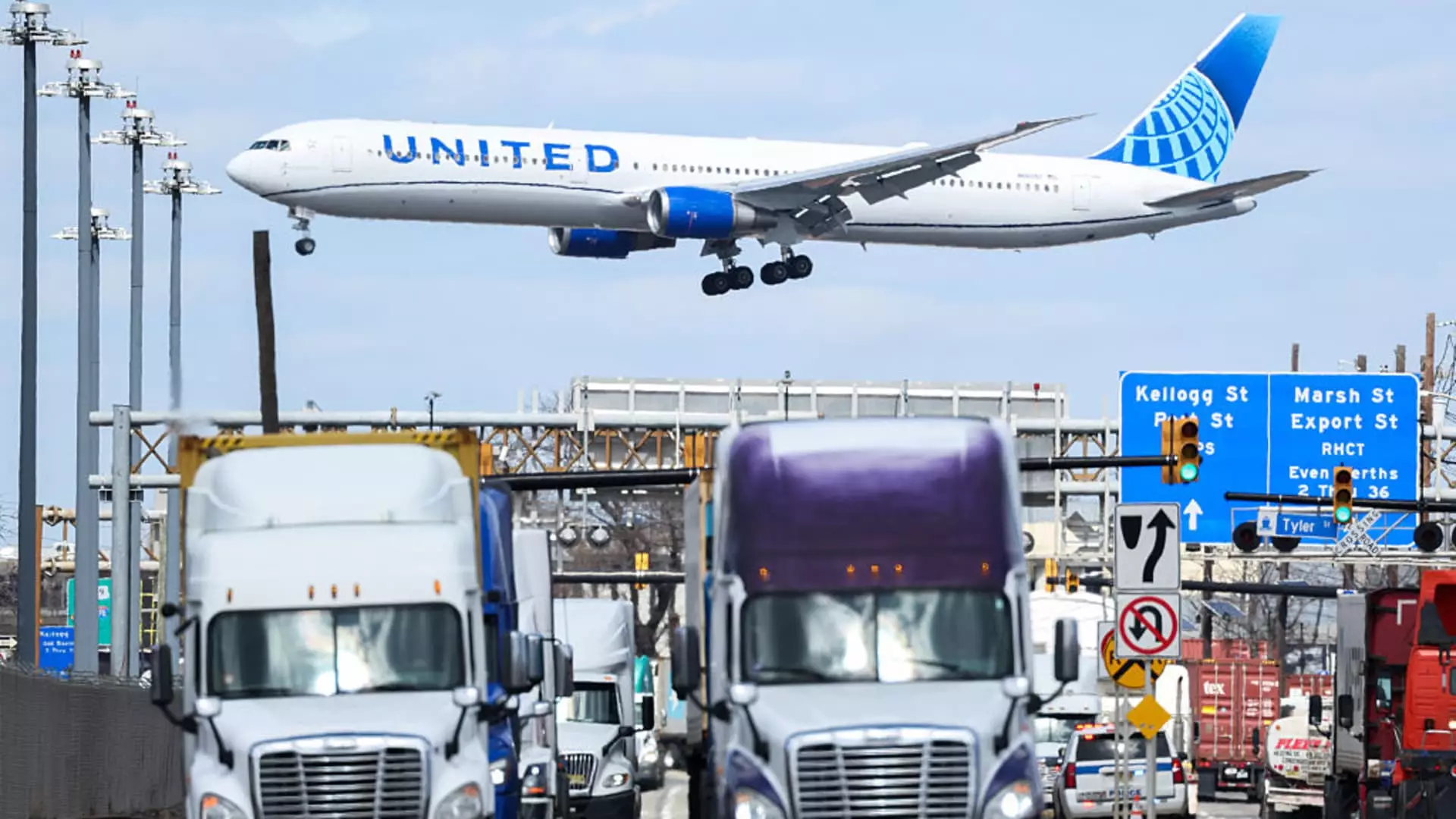In the ever-fluctuating world of corporate finance, few sectors experience the seismic shifts of the airline industry. On Tuesday, United Airlines maintained its full-year forecast, yet it offered a cautionary echo of potential downturns by forecasting a second set of expectations in light of a possible U.S. recession. Labeling the economic landscape as “impossible to predict,” United’s management reflects not only a legitimate apprehension about economic stability but also a remarkable adaptability that characterizes the company’s strategic thinking. Such foresight is not merely a reaction; it is emblematic of a growing trend among corporations that recognize the need to prepare for an uncertain future.
United’s assertion that they can still turn a profit, despite these unpredictable waters, denotes the delicate balancing act that they are trying to achieve. The calculated risks they’re undertaking showcases the airline’s commitment to maintaining operational efficiency, even amid market chaos. Yet, a stronger focus on domestic travel trends underscores just how vital it is for corporations to remain agile and attentive to consumer behavior.
Flight Cuts and Booking Trends
Flight reductions may appear to be a desperate measure, but in reality, they demonstrate a pragmatic approach to operational adjustments. United plans to cut domestic flights by about 4% starting this summer—a strategic decision spurred by dwindling domestic travel demand. While other airlines may be enticed to ignore shifting trends or play catch-up, United has opted to proactively align its capacity with realistic consumer needs.
The reality that international trips are retaining strength while domestic flight demand wanes paints a dual picture of opportunity and challenge. This bifurcation in the market underlines the importance of strategic routing and pricing, as travelers increasingly turn towards premium, high-value offerings rather than the economy and coach classes. This trend should not surprise us; the pandemic catalyzed a significant shift in how travelers prioritize their spending, favoring luxury experiences even in the face of economic uncertainty.
Strong Earnings Amidst Economic Turbulence
In an environment typically marked by volatility and unpredictability, United Airlines has managed to break through with notable resilience. The revelation of a $387 million profit—up from a loss in the previous year—demonstrates a series of effective maneuvers that have yielded positive results. The adjusted earnings per share, soaring past expectations, are a testament to the airline’s improved operational efficiency and revenue strategies.
Profit margins in the airline sector have traditionally faced the harsh realities of rising fuel costs and competitive pricing; United’s success in increasing unit revenue from international routes by over 5% is no minor feat. The capacity increase of almost 5% from the first quarter of last year can be interpreted as a forward-looking stance, wherein the airline maximizes its potential in the more lucrative international segment while remaining cautious domestically. The ability to adapt is increasingly vital, and United seems to embody this principle with their pronounced focus on premium-cabin offerings, which have seen a 17% uptick in demand.
An Industry in Transition
United Airlines operates within a broader landscape that is undergoing marked transitions. Economic pressures such as government layoffs, high inflation rates, and looming trade wars have reshaped consumer sentiment into a somewhat pessimistic view on spending. Consequently, airlines like Delta Air Lines are similarly reevaluating their outlooks amid uncertainty.
United’s CEO Scott Kirby’s assertion that the airline will continue to execute its multi-year plan regardless of external circumstances illustrates an industrious approach that isn’t merely reactive but proactive. This ambition gives hope to investors and stakeholders alike, suggesting a robust long-term vision that can withstand the prevailing economic winds.
Operating in this complex environment demands a blend of caution and boldness, and yet, United Airlines seems poised to thrive where others may falter. In an industry still grappling with the vestiges of the pandemic and the unpredictability of global politics, United’s strategy reflects an understanding that the ability to adapt will be essential not just for survival, but for future growth. The airline industry may be in a constant state of flux, but with the plans and foresight evident in United Airlines’ actions, it stands ready to navigate through turbulence with confidence.

Leave a Reply